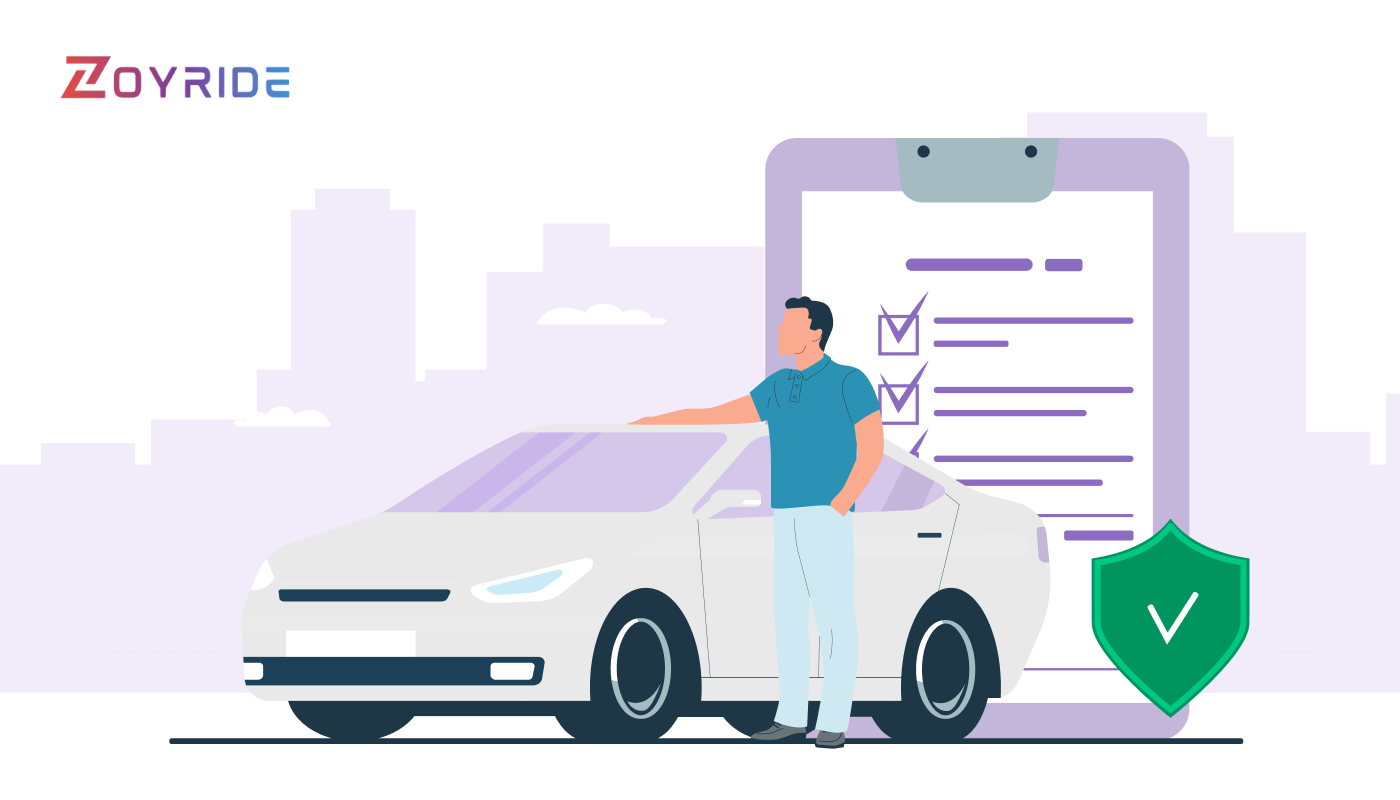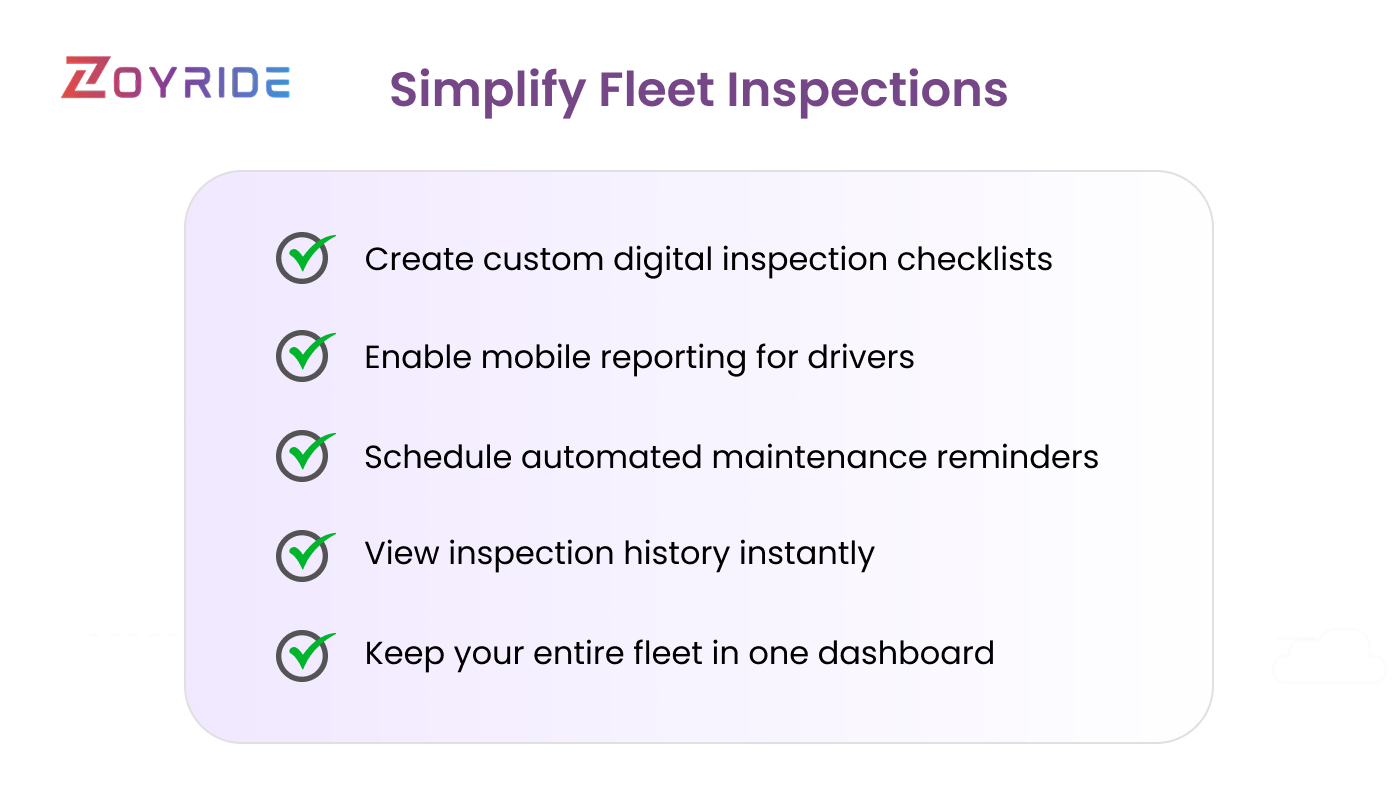How to Conduct an Effective Vehicle Inspection: Must-Check Items

If you're managing a fleet of taxis, rental cars, or even corporate employee shuttles, regular vehicle inspections are not just a good idea — they’re essential. Staying on top of inspection routines helps avoid breakdowns, keep drivers and passengers safe, and extend the lifespan of your vehicles.
But what exactly should you be checking? And how often?
Let’s break it down into a simple, actionable guide so you can keep your operations running smoothly.
Why Are Vehicle Inspections Important?
Here’s why vehicle inspections should be a non-negotiable part of your transport operations:
- Avoid unexpected breakdowns that lead to customer complaints or delays
- Spot minor issues early before they turn into costly repairs
- Stay compliant with local transport safety regulations
- Optimize fuel and performance by keeping the vehicle in top shape
- Increase resale value and reduce long-term maintenance costs
What to Check During a Vehicle Inspection
Whether it’s a daily check by the driver or a full monthly inspection, here are the key things every operator should look at.
1. Exterior Checklist
- Tires – Look for tread depth, cracks, punctures, and proper inflation
- Lights – Headlights, brake lights, turn signals, and hazard lights should all work
- Windshield & Wipers – Clear visibility, no cracks, blades working properly
- Mirrors – Adjusted and damage-free
- License Plates – Clean and clearly visible
2. Under-the-Hood Inspection
- Engine Oil – Check levels and for signs of leaks
- Coolant & Radiator – No leaks or overheating signs
- Brake Fluid – Should be full and clean
- Battery – Check for corrosion and strong connections
- Belts & Hoses – No fraying, cracking, or leaks
3. Interior Inspection
- Dashboard Warning Lights – Should be off during startup
- Horn – Loud and responsive
- Seat Belts – All seats must have working belts
- AC & Heater – Test airflow and temperature
- Emergency Kit – First-aid, fire extinguisher, triangle present and usable
4. Brake & Steering Check
- Brake Pedal – Should feel firm, no grinding or squealing
- Handbrake – Holds the vehicle on a slope
- Steering Wheel – Turns smoothly, no unusual noise or resistance
- Suspension – Listen for clunks or rattles during a short drive
5. Quick Test Drive
- Vehicle starts without delay
- Acceleration and braking are smooth
- No strange noises or vibrations
- Steering is responsive and aligned
- All gears (manual or auto) shift correctly
Want to Simplify Fleet Inspections?

Using pen-and-paper checklists is outdated. With Zoyride’s fleet management system, you can:
- Create custom digital inspection checklists
- Enable mobile reporting for drivers
- Schedule automated maintenance reminders
- View inspection history instantly
- Keep your entire fleet in one dashboard
Explore Zoyride’s Fleet Management Software
How Often Should You Do Inspections?
Here’s a general schedule to follow for most commercial vehicles:
1. Daily Walkaround Inspection
Frequency: Before every trip
Performed by: Driver
Purpose: Quick visual check to catch obvious issues like tire pressure, light functionality, or leaks.
2. Weekly Basic Safety Check
Frequency: Once a week
Performed by: Fleet Supervisor or Operations Staff
Purpose: Check critical components like brakes, wipers, fluid levels, and dashboard alerts.
3. Full Mechanical Inspection
Frequency: Monthly or every 5,000 km (whichever comes first)
Performed by: Certified Mechanic or Fleet Manager
Purpose: A deep dive into engine health, transmission, suspension, electricals, and underbody for preventive maintenance.
4. Seasonal Preparation Check
Frequency: Twice a year — before summer and winter
Performed by: Maintenance Team
Purpose: Inspect AC, heating, coolant levels, tire condition, and battery to prepare for extreme weather changes.
Final Thoughts
Vehicle inspections aren’t just a safety routine — they’re a smart business practice. If you manage any kind of fleet, building a reliable inspection process can cut costs, avoid incidents, and build trust with customers and clients.
Want a smoother, smarter way to manage your vehicles? Try Zoyride's all-in-one fleet management solution — designed for taxi operators, logistics providers, and transport businesses of all sizes.
FAQs
Q1. How long does a vehicle inspection take?
A quick daily check can take just 5–10 minutes. A full inspection may take 30–60 minutes depending on the vehicle type.
Q2. What happens if I skip inspections?
Skipping inspections can lead to breakdowns, higher repair bills, unhappy customers, or even legal penalties — especially in regulated industries.
Q3. Can I digitize my inspection process?
Yes! Platforms like Zoyride help you move away from paperwork and run your inspections via app, with automated tracking and reminders.
Q4. Is this checklist valid for taxis, trucks, and rentals?
Absolutely. While some points vary by vehicle type, this list covers the core checks for taxis, shuttle buses, freight trucks, and rental cars.
Q5. Do inspections help with resale value?
Yes. Vehicles with consistent inspection and maintenance logs often fetch higher resale values and show buyers that the asset was well cared for.